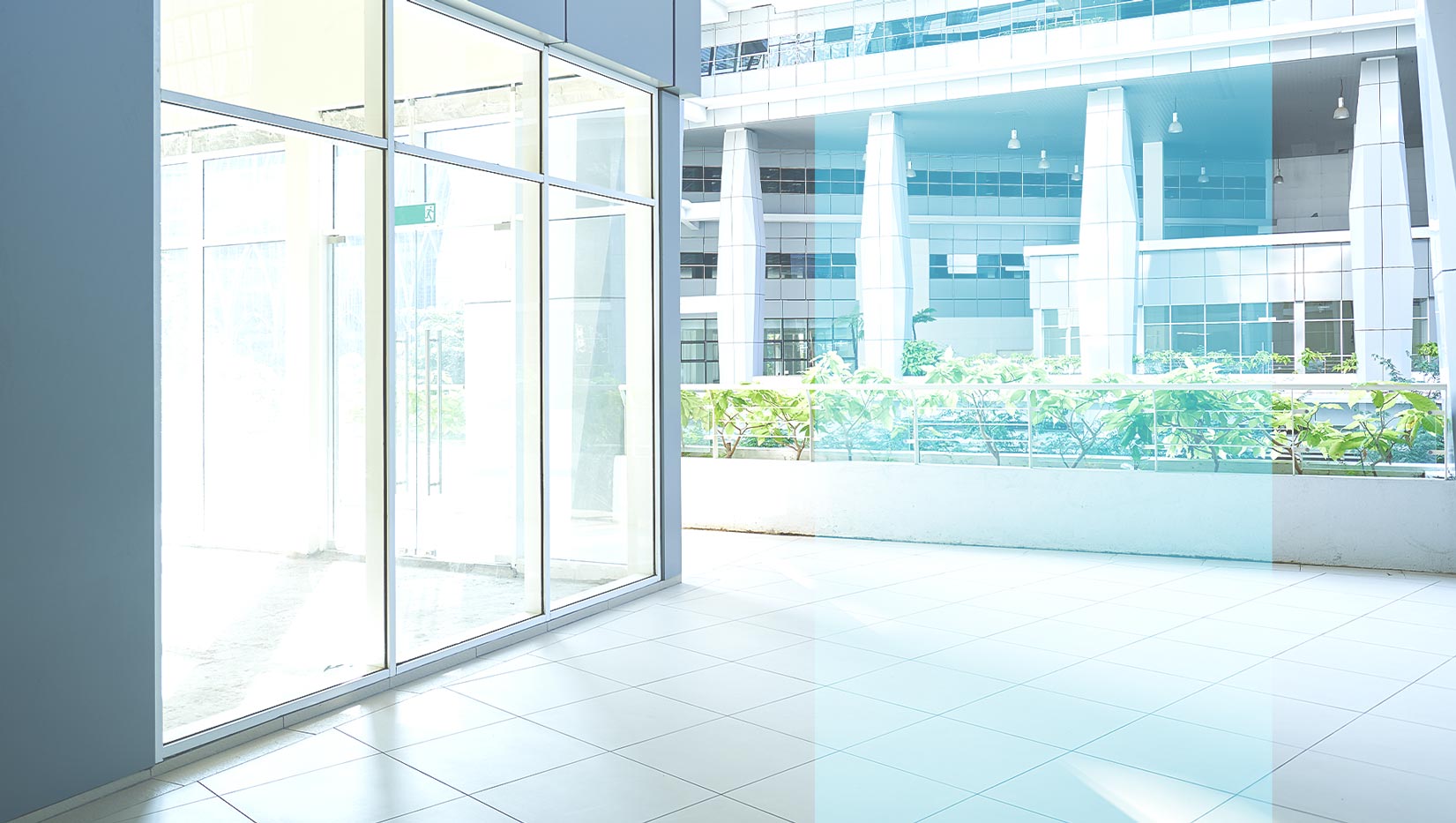You don’t need to look very far to see how much the concepts of environmental responsibility and resource efficiency are starting to take hold in the business world. Increasingly, leaders are recognizing that “green business is good business,” and investors are pivoting to support sustainable companies. Marc Benioff, CEO of Salesforce, even called for the creation of a new era of capitalism based on sustainability as well as fairness and equality. Whereas once a corporation’s sole purpose was to produce a financial return for shareholders, now it’s about how businesses impact a broader group of stakeholders—employees, the environment, local communities, and more.
Benioff’s actions support this sentiment, particularly as it relates to his office buildings. To combat the trend of increasing energy demand for commercial and industrial buildings, Benioff is actively integrating green building features into his offices, including onsite solar panels, 100% renewable energy use, and battery storage, along with the use of green building materials. Tactics like these promote employee wellness, sustainability, productivity, and more—green building benefits any office can achieve with the right strategy in place.
Below we examine what makes a building “green” and explore green building benefits in more detail. And if you’re interested in learning how to make your office or industrial building more green, get in touch—we can help.
What is a green building?
Once thought of as simply buildings that conserve energy, today the concept of a green building covers more ground to include buildings that reduce or eliminate negative impacts in every aspect. They are not only “friendly” to the environment, but also to the occupants. (One in four buildings can be classified as “sick,” aggravating or causing health conditions in occupants.)
For guidance on the specifics of what “green” really means, building managers can look to two sources: the U.S. Green Building Council’s Leadership in Energy and Environmental Design (LEED) program, and the International WELL Building Institute’s WELL Building Standard.
LEED is the most widely used green building rating system in the world. It was designed to encourage building owners to improve the performance of their buildings, and awards various levels of certification depending on level of achievement. Developed in 1998, LEED clarified what it meant to be a green building, and offered a roadmap to help building owners improve. Today there are more than 100,000 registered and certified LEED commercial projects. LEED certification focuses on areas related to sustainability, green building materials, energy efficiency, and the environment.
The WELL building standard is also a performance-based rating system similar to LEED. Its focus is on building features that impact the health and wellness of occupants—including air, water, light, fitness, and comfort.
The requirements for LEED and WELL are too many to include in this blog post (you can find the complete documentation on LEED for existing buildings here and the WELL checklist here). However, these documents outline the foundation of what it means to be a green building today, including (but not limited to):
| LEED | WELL |
|---|---|
|
|
Many building owners strive for certification in both LEED and WELL; both rating systems overlap in some ways, and they are reviewed by the same organization, the non-profit Green Building Certification Institute. Having built a platform in one will no doubt be helpful in achieving the other.
So why should you strive for either LEED or WELL—or even just improve your building’s performance on your own? Below we cover the advantages of green building, some of which might surprise you.
4 Green Building Benefits
1. Green buildings benefit the environment.
First and foremost, green buildings are good for the environment in a multitude of ways:
- Energy use in buildings accounts for one-quarter of all greenhouse gas emissions (GHGs). Studies have shown that green building certification can reduce energy use by 25% or more in newly constructed buildings and 16% or more in existing (older) building operations.
- Green buildings’ use of water-efficient appliances and fixtures has the potential to reduce water use by 15%.
- Construction is responsible for up to 23% of air pollution; it also produces a lot of waste. Green builders are more likely to use renewable materials that preserve trees, and tend to be less wasteful by repurposing materials, avoiding sending excess material to landfills.
2. Going green saves money.
Going green might cost money initially, but you will likely see cost savings over the long term. The average building wastes 30% of the energy it consumes due to inefficient use of lights and operating equipment. One of the most impactful energy conservation measures facilities managers can implement is demand control ventilation, which has a payback of 2.5 years with an average of 38 percent energy reduction in buildings—that translates to a 15–20% reduction on your energy bill. Other measures can produce savings as well.
[bctt tweet=”Demand control ventilation, which has a payback of 2.5 years with an average of 38 percent energy reduction in buildings, can translate to a 15–20% reduction on your energy bill.” username=”iotacomm”]
If you’re not already using the two energy-efficiency strategies outlined in this free guide, you’re missing out on cost savings.
3. Green buildings promote healthier, happier, more productive occupants.
The health benefits of green buildings are clear: A better workplace environment promotes employee satisfaction, engagement, and productivity. You’re also likely to see a reduction in absences and less turnover as a result of a healthier environment. One company striving for WELL certification demonstrated a positive ROI outcome within three months simply by calculating reductions in sick leave and attrition alone. You can start to make improvements simply by starting to monitor your indoor air quality and alter your lighting.
Among the advantages of green building: One Harvard study found that office workers increased their productivity by roughly $6,500 per year as the result of optimized ventilation rates.
4. Green businesses have a competitive advantage.
One of the advantages of green building is that sustainability is attractive to investors. Mainstream investment firms are showing greater interest in companies’ environmental, social, and governance (ESG) data, with environment being a main focus. Climate change, in particular, is a major investment theme, with many investors even pulling out of investments for companies that show a negative impact on the environment. Organizations that measure their impact on the environment—and have actual numbers to back it up—will fare better in the market.
Examples Of Green Buildings
Examples of green buildings can be found throughout the U.S., across all industries:
Known for being a global leader in sustainability, Unilever received the highest level of LEED certification for its headquarters in New Jersey. The building was retrofitted and updated with state-of-the-art technology, transformed into a highly efficient complex that meets both LEED and WELL standards. Unilever also installed Internet of Things (IoT) technologies that record data and automate the building’s features and functions in an effort to learn about its energy usage and find ways to best conserve energy.
- Chicago’s Willis Tower became the largest building in the U.S. to earn Platinum LEED certification in 2019. Among the enhancements that were made to the building include the installation of LED lighting; updating the HVAC system with new, more energy-efficient technologies; replacing hot water generators with natural gas hot-water boilers; and installing low-flow, high-efficiency sink faucets and toilets.
- Western Kentucky University’s Ogden College Hall may be “the healthiest university lab building in the world” after achieving WELL certification. It is constantly monitoring indoor air metrics for pollutants; it also added additional windows for more natural light, increased the number of water fountains throughout the building, and installed new water and air filtration systems, among other things.
- San Diego County’s Inn at Moonlight Beach was the first hospitality project in the world to achieve WELL certification. Drinkable, clean water; meticulous air filtration; healthy food offerings; a health and wellness library; and a biodynamic urban farm on-site are just a few of the property’s features that promote health and wellness among occupants.
Do you want to experience the benefits of a green building?
Using simple IoT technology solutions, Iota has helped numerous companies make their buildings healthier and more energy-efficient in an effort to become greener, and even to achieve LEED and WELL certifications. Our wireless sensors and data-analysis software gather real-time, in-depth data about your operations that can be used to transform your building into a high-performing, sustainable facility that benefits both you and your occupants. Whatever your goal may be—earning certification, saving money on energy costs, using resources more efficiently, or anything else—we’re here to help. Contact us today to learn more.


